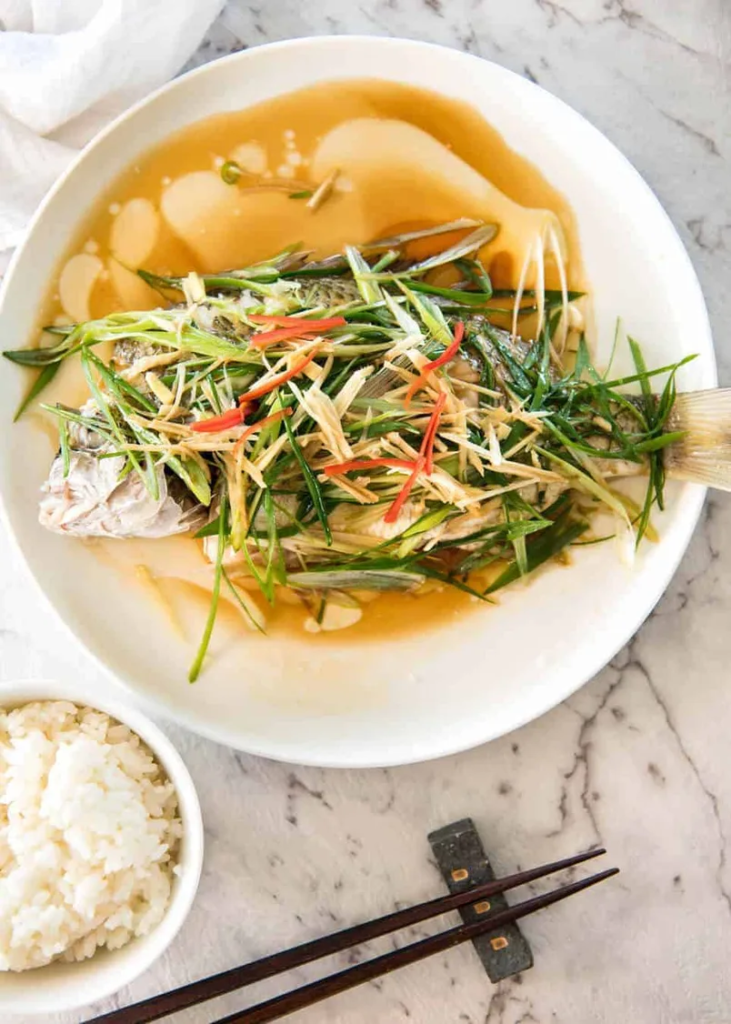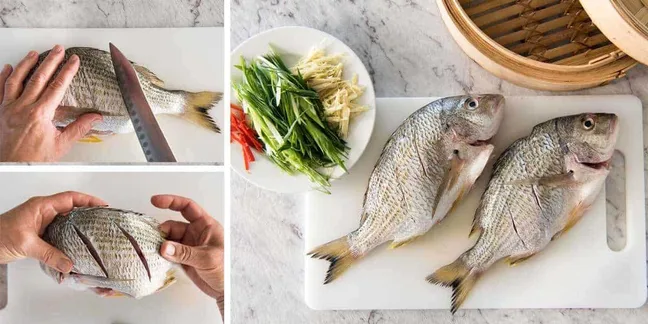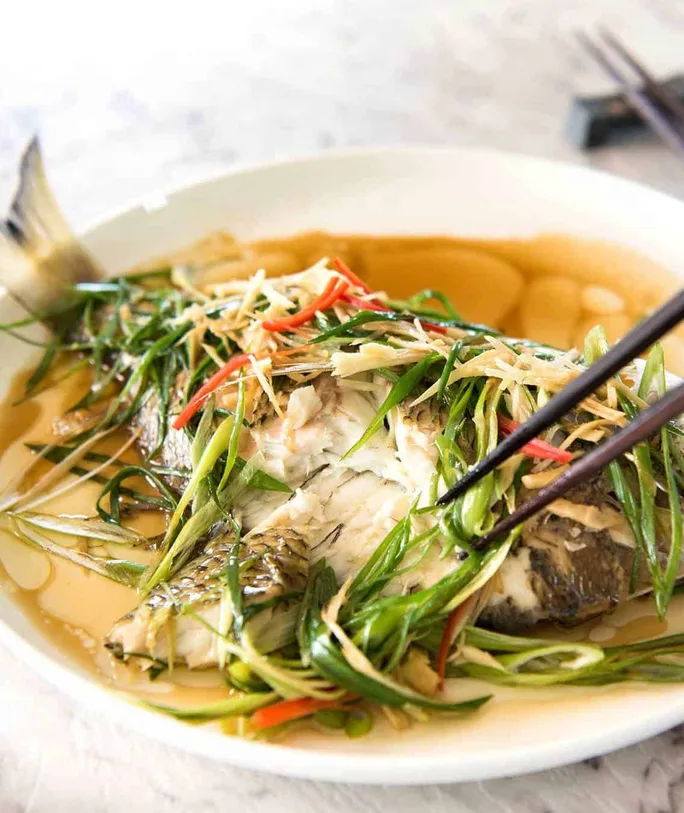Chinese Steamed Fish with Ginger Shallot Sauce
Traditional Chinese New Year Foods to Ring in the Year of the Snake
While many in the West celebrate the new year on January 1st, many Asian and Asian-American communities observe Lunar New Year, also known as Chinese New Year in the U.S. In 2025, Lunar New Year begins on January 29th, marking the Year of the Snake in the Chinese zodiac. Also called Spring Festival in mainland China, Lunar New Year commences on the night of the first new moon of the lunisolar calendar, which is slightly shorter than the 365-day solar year. This 16-day festival is rich in traditions, particularly when it comes to food. These dishes are not just eaten; they are prepared and served with symbolic meaning. One of the most important
Tradition is the reunion dinner, a large family gathering where loved ones share wishes for health, happiness, and prosperity in the coming year. This dinner is so significant that many people travel long distances to be with their families.
This recipe focuses on steaming, which is a popular and health preparation method.
Whole Steamed Fish (魚 / yú):

- Serving a whole steamed fish is a significant tradition during the reunion dinner, symbolizing prosperity and good fortune. The Chinese word for “fish” (yú) sounds similar to the word for “surplus” or “abundance,” making it an auspicious dish.
- Symbolism: It’s essential that the fish is served whole, with both the head and tail intact. This represents a good beginning and end to the year, signifying completeness and continuity. Leaving half the fish uneaten until the following day further symbolizes lasting prosperity.
- Serving Etiquette: Traditionally, the fish’s head is positioned towards the most respected or elderly guests, who are expected to begin eating before others. It’s also considered good luck for those facing the head and tail to share a drink together.
- Fish Varieties: While bream or snapper are commonly used for steaming, other traditional options include Crucian carp, Chinese mud carp, and Chinese catfish.
Ingredients:
- 2 x 350-400g (12-13 oz) bream or snapper fish, gutted, scaled, and cleaned (Note: Any firm white fish that is not too oily can be used.
- Fish fillets can also be used, but whole fish is generally juicier.
- Aim for around 200g/6.5oz of flesh per person.
- If using fillets, use 150-180g/5-6oz each.)
- 2 shallots (scallions/green onions), diagonally julienned to 5cm/2″ length
- 4 x 3cm (1 x 2″) piece of ginger, julienned
- 2 tbsp Japanese cooking sake (Can substitute with Chinese cooking wine, dry sherry, or chicken broth if alcohol is not desired.)
- 2 pinches of salt
- 3 tsp soy sauce (All-purpose soy sauce like Kikkoman is recommended. Light soy sauce can be used, but dark soy sauce is too intense.)
- 2 tsp sesame oil
- 4 tbsp oil (vegetable, canola, or peanut oil)
- Optional Garnish: Red chili, julienned (Use long, mild red chilies for a touch of color. Smaller chilies are generally hotter.)
Instructions:

- Cut two slashes on each side of the fish, cutting through to the bone.
- Drizzle 1 tbsp of sake onto each fish.
- Steam the fish using your preferred method (bamboo steamer in a wok, steamer inside a large pot, microwave steamer) or bake it (see baking instructions below).
- Bamboo Steamer in Wok: Place the fish on a plate and put the plate in a bamboo steamer. Stack the steamers and cover. Fill a wok with water (ensuring it doesn’t touch the bottom of the steamer) and bring to a boil. Place the steamer on the wok and steam for 10 minutes. Carefully transfer the fish to serving plates.
- Baking: Wrap each fish in foil and place them on a tray. Bake at 180°C/350°F for 15 minutes. Open the foil and carefully transfer the fish to serving plates.
- While the fish is cooking, heat the oil over medium-high heat until hot.
- Transfer the cooked fish to serving plates. Top with shallots and ginger.
- Sprinkle with salt, drizzle with soy sauce and sesame oil.
- Pour the hot oil over the fish – this will cook the shallots and ginger and create the sauce.
- Garnish with red chili (if using) and serve immediately.
- May be served with rice and steamed Asian greens (such as Bok Choi with Oyster Sauce).
Notes:
This recipe yields approximately 200g/6.5oz of flesh per fish, a generous serving for one person. You can use a slightly larger fish (around 450g/15oz) to serve four people with sides.

